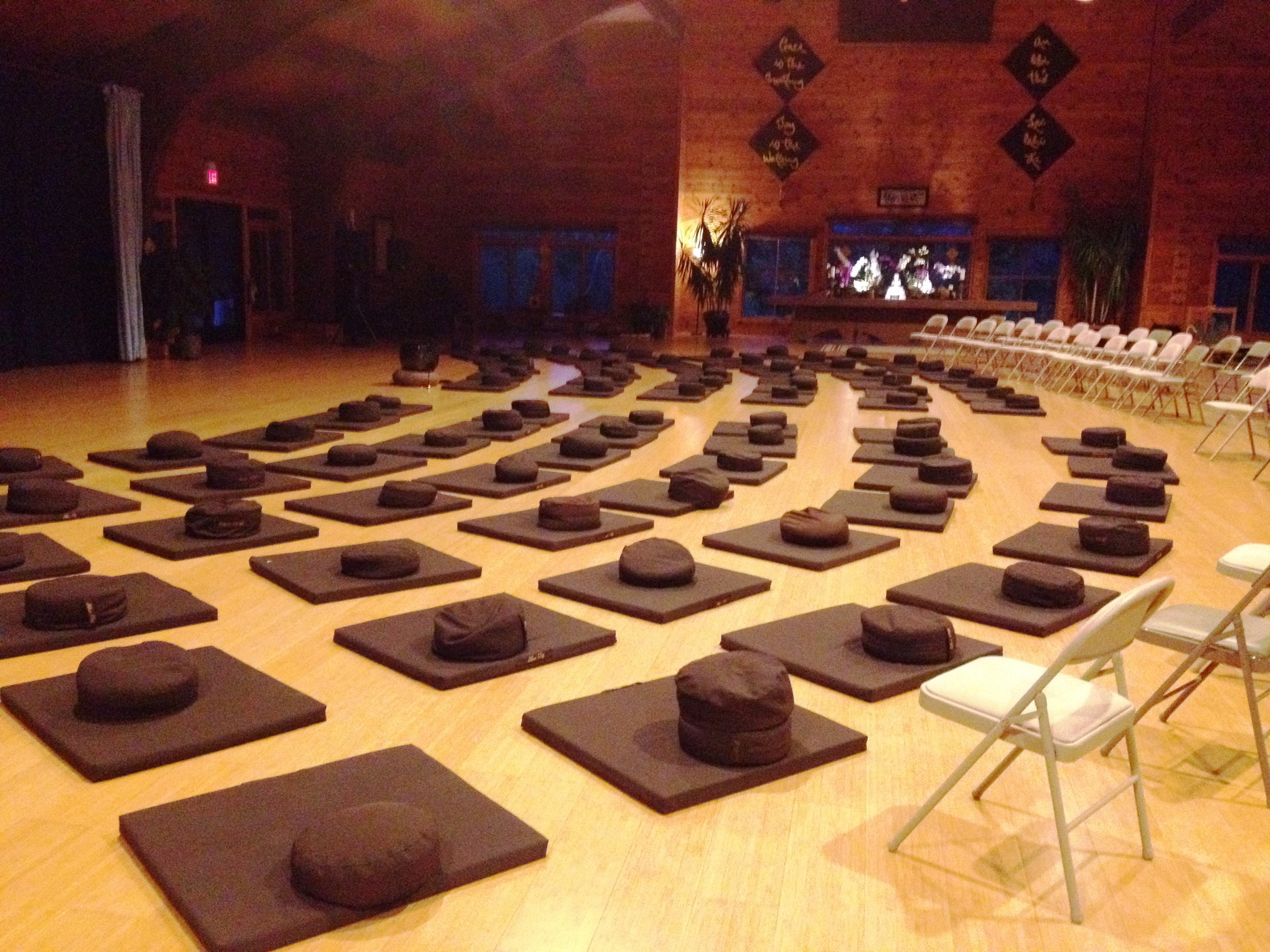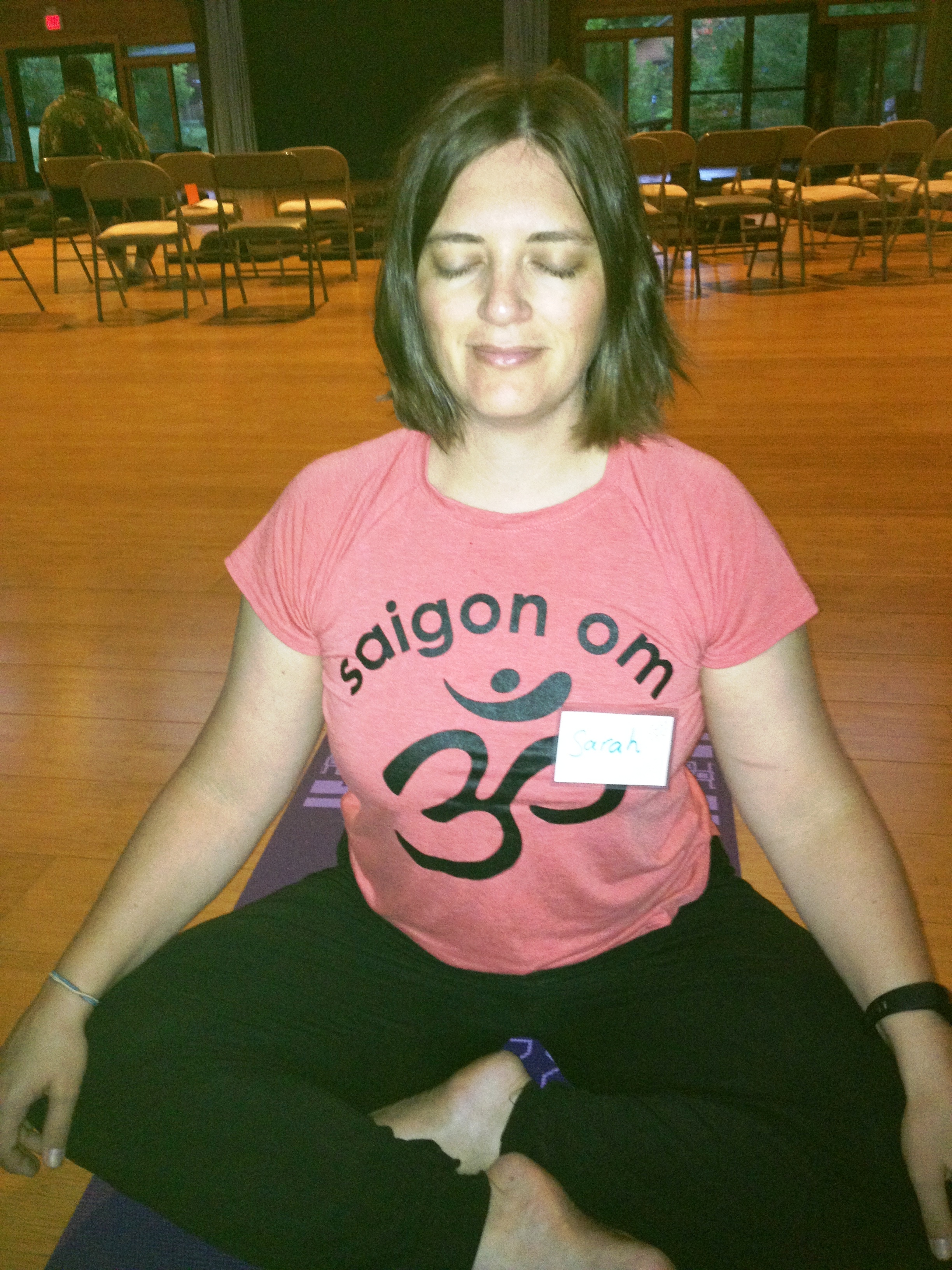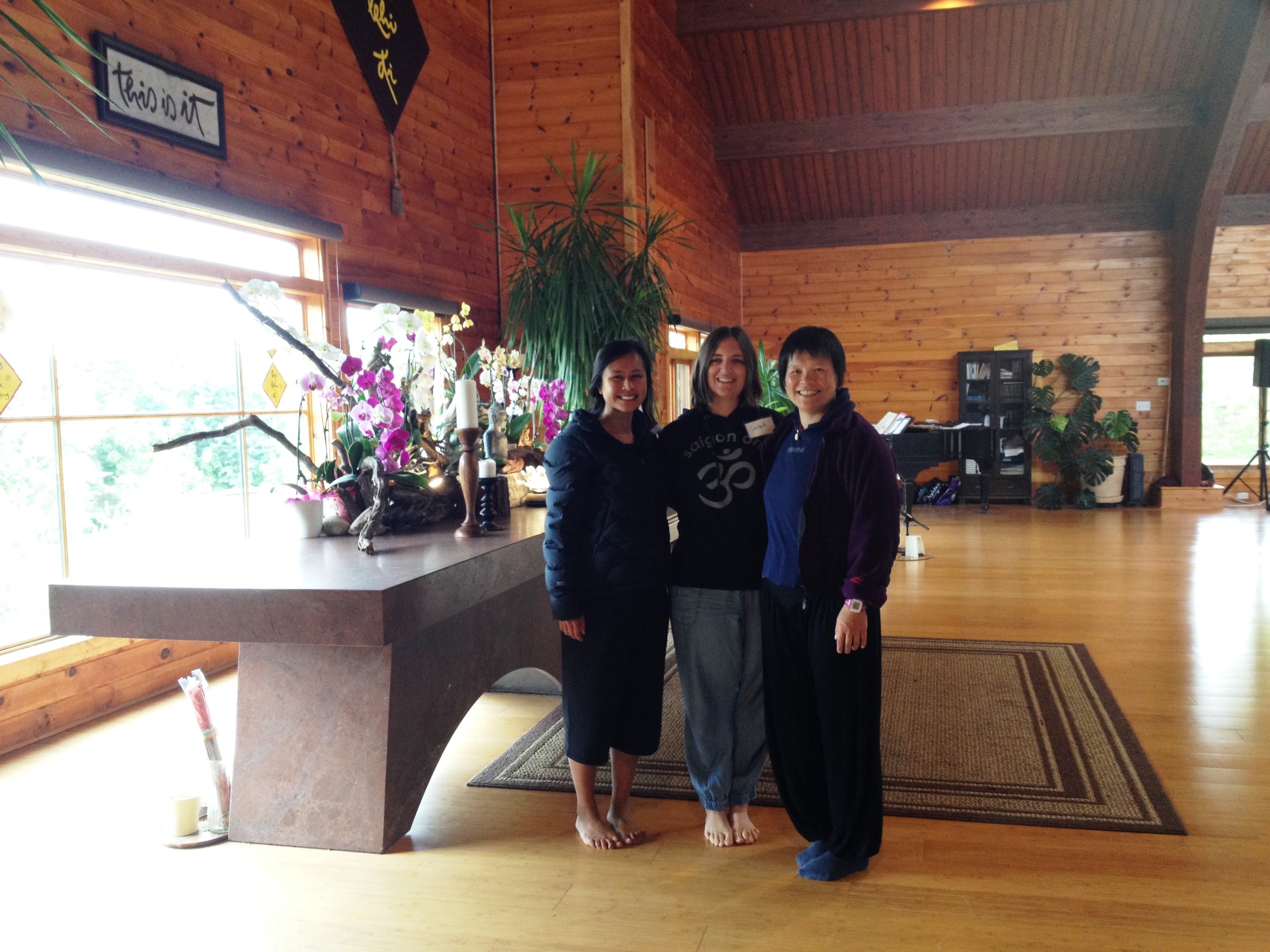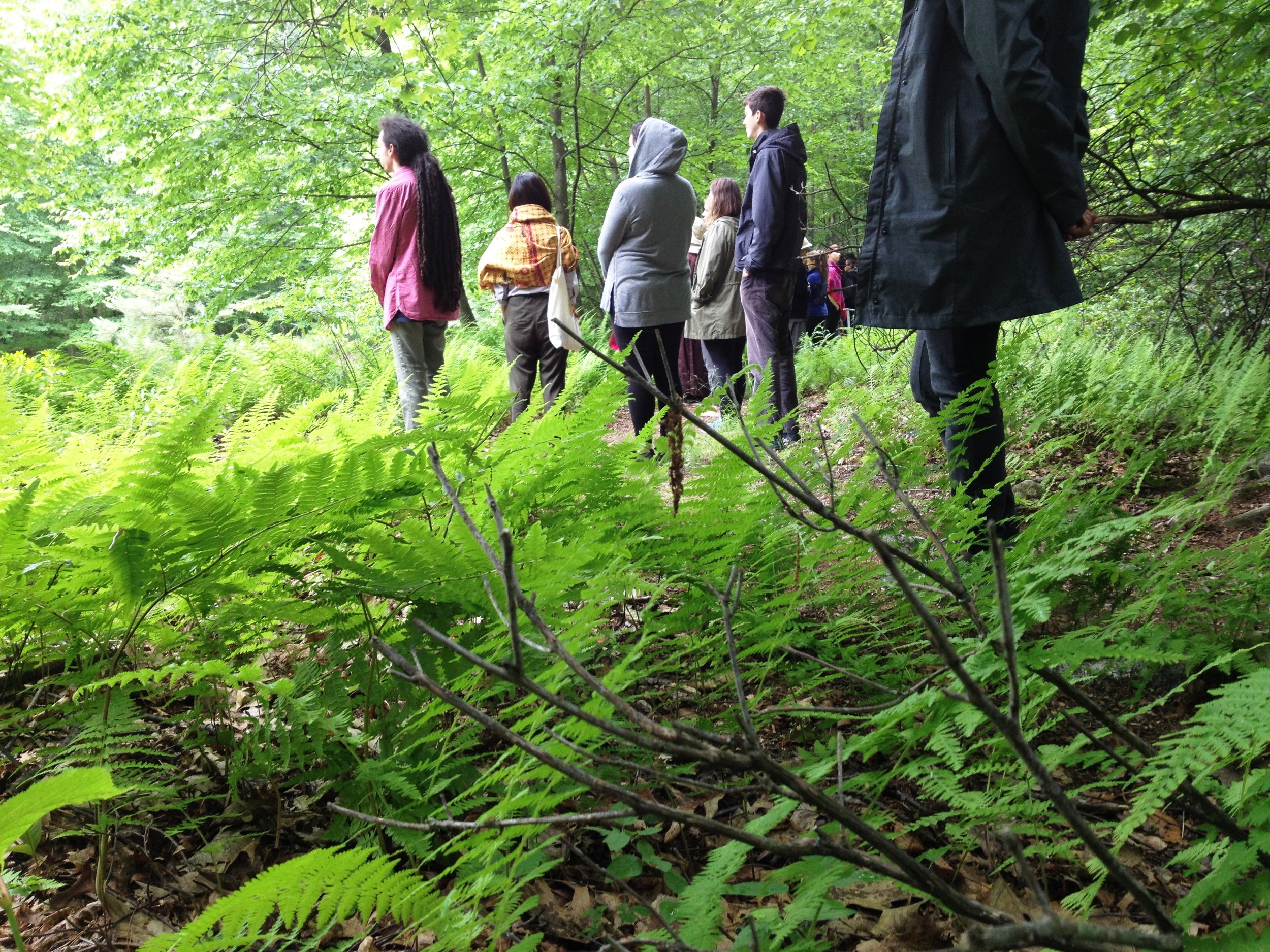Dear Beloved Friends,
As we continue to “Stay at Home” with much uncertainty, I’ve been continually asked by other yoga teachers, health care providers, and saigon om students with various wording of one question and that is: “How do I deal with this isolation?” I thought I’d amalgamate my responses and share my personal experience and practice here with you.
Wise teachers often mention that our “practice” is most true and transformative when we’re in the middle of a difficult situation, not necessarily when everything goes our way. In fact, these challenges are sometimes called our “teachers” to help us grow and be better people, if we are aware of them. These so-called teachers come in many forms from a gentle and kind reminder to a fierce one like that of the novel Corona virus.
It hasn’t been easy for myself either, especially when I’m used to being out and about teaching and sharing our wellness practices in yoga studios, schools and workplaces. It took me a week or so to find my bearings with new routines as I learned to accept this new way of life. And with Sarah and baby on the way, I need to be extra diligent in my practice so that there is continued harmony in our home.
Here are 5 simple practices I do to stay grounded and centred:
1. DWELLING IN THE PRESENT MOMENT WITH LOVING AWARENESS
Each morning as I wake up before sunrise, I lay in bed or when I’m at my coffee machine, I take three deep breaths and I recite one of my favourite mantras from our mindfulness teacher, Thich Nhat Hanh, “Waking up this morning I smile. 24 brand new hours are before me. I vow to fully live each moment and to see all beings with eyes of compassion.”
Each night, before lying down to sleep, I take 3 deep breaths sitting on my bed and recite this impermanence mantra to reflect on my day: “The day is ending and our life is one day shorter. Let us look carefully at what we have done. Let us practice diligently, putting our whole heart into the path of meditation. Let us live deeply each moment and in freedom, so the time doesn’t slip away meaninglessly.”
I love these reminder mantras so much that I printed and laminated them, and put the morning mantra by our coffee machine and the impermanence mantra on my bedside. In fact, we have mantras all around our house to remind us to come out of forgetfulness and be present and live each moment fully, whether it’s labeled as “bad” or “good”. Because I’ve been given the gift of life I have the awareness get to know my suffering, take care of and transform it to a more pleasant feeling.
Here’s a list of mantras that you, too, can practice.
Throughout the day, I often stop to focus on 3-5 rounds of breathing and check in with how I’m doing. I tune into how my body is feeling or where in my body am I feeling any sensation. If there’s anger, frustration or any strong emotion in me, I stop, breathe and smile to them. Sometimes, I use this mantra: “Breathing in, anger, I see you. Breathing out, anger, I smile so I don’t lose myself in you.” I substitute the word “anger” with other strong emotions.
Life isn’t always about suffering and challenges. Life is also full of wonders in me and around me so I practice gratitude for them too, like my beating heart, my healthy kidneys, or my well-being. I offer a lot of gratitude to my body when I’m practicing Qi Gong or yoga. I also love listening to the birds. There are so many wonderful bird sounds in Australia at the moment.
The hardest part of this practice is when another person is involved, like a beloved one. I have had to remind myself to let go of my pride and apologize to bring about harmony in our household when Sarah and I have a disagreement. It’s not easy and so I humbly continue to practice on letting go of my pride. It does feel really good in my heart and body when there’s harmony in our family.
2. SPENDING TIME WITH MOTHER NATURE
We’re very fortunate that we can still go outside to exercise in this corner of Australia. Sarah and I often take advantage of the ocean and go for walks along the beach, listen to the waves, and make small and meaningful conversations.
We have friends who aren’t able to leave their house due to the lockdown and I’ve asked them to look out the window and see if they can notice the outside wonders, like the moon, sun, cloud, sky, trees, birds, etc. I invite you to refocus your eyes’ lens and set the aperture-priority mode to curiosity and openness. Listening to field recordings of nature is also healing. How much of your day is spent with Mother Nature?
3. EXERCISING – MOVE YOUR BODY
In my former life, I was a mixed martial artist and personal/fitness trainer for over 19 years before shifting focus to wellness and mindfulness. Now, I practice both fitness and mindfulness every day. We all know that exercising releases endorphins, which can help elevate our mood.
When not at the beach for a walk, Sarah and I work out at home. We signed up for fitness classes on demand. We work out to break a sweat about 3-4 times each week. When I don’t exercise, I notice that I get lazier and more tired, so it’s good for me to get into the habit of exercise, even if it’s only for 20 minutes each time.
For free guided workouts, go to YouTube and search: Fitness Blender. We also pay for some of our favourite gym classes via Les Mills. It’s about $30/month with over 800 programs to follow along.
Of course, there are also our saigon om donation-based daily yoga and Qi Gong classes on Zoom. You can find our schedule and register for our online classes here. Please join us regardless of your financial situation.
Can’t make it to class? No worries, we have them on demand on our website as well.
As Hal Johnson and Joanne McLeod used to say on Body Break - "Keep fit and have fun!" (Canuck friends, smile if you know who I'm talking about)
4. STAYING CONNECTED
While I am physically distanced from my friends and family, I am very grateful to technology for helping me stay virtually connected with my family and like-minded friends around the world. I “chat” with my niece in Hoi An, Vietnam almost daily. I also make time to sit with various mindfulness/meditation groups throughout the week to breathe an d nurture collective peace. More importantly, I make sure that I have time in the morning to connect to myself - my heart, body and spirit.
Sarah and I also very blessed to stay connected with you, our saigon om friends, with the online classes. We’ve excited to have you joining us to help us all stay on the path of well-being. You’re the reason we wake up every morning, and coffee!
I’m very blessed that I have Sarah and baby here to practice hugging meditation every morning and night. I still need that human connection whether or not I enjoy being alone. For hugging, we stop talking and hug each other for three deep breaths.
5. SLOWING DOWN
Since I have nowhere to go and not much to do, I enjoy waking up and doing things slowly in the morning and throughout my day. My Qi Gong teacher once told me that how you start the practice is how the rest of your practice is going to be. I apply the same idea to my day. If I start my day slowly with peace and awareness, my day will also be peaceful with awareness so I don’t miss every sip of life.
If your tendency was rushing everywhere before the “stay at home” movement, perhaps now is the time to start slowing down. In slowing down, I actively make a point to find joy in my daily activities like vacuuming, cleaning, and eating. The way I see it, I have to do these things any way so I might as well enjoy them. If not, I make myself suffer even more. I also remind myself to be grateful to have a washing machine, enough food to eat, and clothes to wear, etc. What are you grateful for in your life?
Indeed, it is a very interesting time we’re all experiencing. Please see it as an invitation to start or deepen your spiritual practice: a practice that brings you harmony and peace right away, so you don’t get lost in the whirlpool of suffering. Take a moment to breathe and reflect on your suffering.
The Yoga Sutras of Patanjali refers to five kleshas or 'afflictions' to help us reflect on which affliction(s) are alive in us that is preventing us from being free; free from our mind, that is. Consider this list an invitation to help pin point your suffering.
1) Avidya = Ignorance: The lack of awareness. Often referred to as the root cause of other sufferings.
2) Asmita = Egoism: The lack of humility. Can be dangerous if we think we know everything.
3) Raga = Attachment: Not being able to let go, or go with the flow with life, not accepting the idea of "stay at home".
4) Dvesa = Aversion or hatred: Not wanting to do things that need to be done.
5) Abinivesah = Clinging to life and fear of death: Almost like living in paranoia.
The awareness of our suffering can be very liberating and freeing. Beloved friends, if this isolation is just too much for you to handle on your own, please know that you're not alone. We are here for you.
We have a few online offerings to provide you with solid foundation and guidance to start or maintain your strong practice. Alone, we’re just a tiny kayak fighting to move upstream. Together, we become a giant ship, supporting one another. We’re just an email away: hello@saigonom.com
Together on the path, with much ease and peace,
Hang
















































